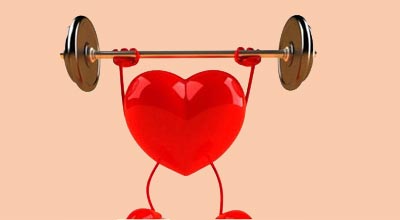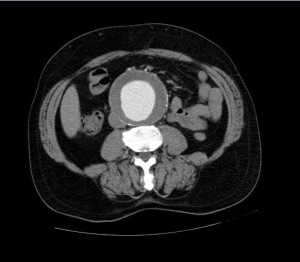Abdominal aortic aneurysm – what are the signs, symptoms, causes and treatments of an Abdominal aortic aneurysm
An abdominal aortic aneurysm (AAA) is a swelling (aneurysm) of the aorta – the main blood vessel that leads away from the heart, down through the abdomen to the rest of the body.
The abdominal aorta is the largest blood vessel in the body and is usually around 2cm wide – roughly the width of a garden hose. However, it can swell to over 5.5cm – what doctors class as a large AAA.Large aneurysms are rare, but can be very serious. If a large aneurysm bursts, it causes huge internal bleeding and is usually fatal.
The bulging occurs when the wall of the aorta weakens. Although what causes this weakness is unclear, smoking and high blood pressure are thought to increase the risk of an aneurysm.
AAAs are most common in men aged over 65. A rupture accounts for more than 1 in 50 of all deaths in this group and a total of 6,000 deaths in England and Wales each year.
This is why many men are invited for a screening test when they turn 65. The test involves a simple ultrasound scan, which takes around 10-15 minutes.
Symptoms of an AAA
In most cases, an AAA causes no noticeable symptoms. However, if it becomes large, some people may develop a pain or a pulsating feeling in their abdomen (tummy) or persistent back pain.
The following video gives an excellent overview of the condition – in particular who AAA is screened and treated.
An AAA doesn’t usually pose a serious threat to health, but there’s a risk that a larger aneurysm could burst (rupture).
A ruptured aneurysm can cause massive internal bleeding, which is usually fatal. Around 8 out of 10 people with a rupture either die before they reach hospital or don’t survive surgery.
The most common symptom of a ruptured aortic aneurysm is sudden and severe pain in the abdomen.
If you suspect that you or someone else has had a ruptured aneurysm, call 999 immediately and ask for an ambulance.
Read more about the symptoms of an AAA.
Causes of an AAA
It’s not known exactly what causes the aortic wall to weaken, although increasing age and being male are known to be the biggest risk factors.
There are other risk factors you can do something about, including smoking and having high blood pressure and cholesterol level.
Having a family history of aortic aneurysms also means that you have an increased risk of developing one yourself.
Read more about the causes of an AAA.
Diagnosing an AAA
Because AAAs usually cause no symptoms, they tend to be diagnosed either as a result of screening or during a routine examination – for example, if a GP notices a pulsating sensation in your abdomen.
The screening test is an ultrasound scan, which allows the size of your abdominal aorta to be measured on a monitor. This is also how an aneurysm will be diagnosed if your doctor suspects you have one.
Read more about diagnosing an AAA.
Treating an AAA
If a large AAA is detected before it ruptures, most people will be advised to have treatment, to prevent it rupturing.
This is usually done with surgery to replace the weakened section of the blood vessel with a piece of synthetic tubing.
If surgery is not advisable – or if you decide not to have it – there are a number of non-surgical treatments that can reduce the risk of an aneurysm rupturing.
They include medications to lower your cholesterol and blood pressure, and quitting smoking.
You will also have the size of your aneurysm checked regularly with ultrasound scanning.
Read more about treating AAAs.
Prevention
The best way to prevent getting an aneurysm – or reduce the risk of an aneurysm growing bigger and possibly rupturing – is to avoid anything that could damage your blood vessels, such as:
- smoking
- eating a high-fat diet
- not exercising regularly
- being overweight or obese
Read more about preventing aneurysms.


